Education in modern terms is about facilitating knowledge acquisition and skills development. Education is all about learning and it can take place both formal or informal settings and any experience that has a formative effect on the way one thinks, feels, or acts may be considered educational through a values, beliefs, and habits.
Etymologically, the word “education” is derived from the Latin word ēducātiō (“A breeding, a bringing up, a rearing”) from ēducō (“I educate, I train”) which is related to the homonym ēdūcō (“I lead forth, I take out; I raise up, I erect”) from ē- (“from, out of”) and dūcō (“I lead, I conduct”).
Modern day education is commonly divided formally into preschool or kindergarten, primary school, secondary school and then college, university, or apprenticeship.
What Is Education – Art or Science?
Education in its form may be regarded both as a science and an art since it consists of theoretical as well as practical knowledge and skills derived through various artistic and scientific methods and aims at achieving desired objectives by applying them in human behavior and practices.
Science is systematic and precise body of knowledge in a particular field. It seeks to discover the general laws regulating the phenomena in that field through observation and experiments. As per this definition, education must be taken as a science since it is a systematic body of knowledge accumulated through ages by observation and experiments. It has its own theories and laws for arrangement and organization of educational activities. Education has been developed as a science during recent years.
Similarly, art is used in two senses – 1. Something which is Creative – producing something beautiful, e.g., singing, dancing, painting and (ii) Something which is intuitive and derived after gaining valuable experience from applying knowledge, e.g. surgery, engineering. As per this meaning, education should be regarded as an art since it attempts to make human activities beautiful and meaningful. It utilizes the knowledge and techniques of its own and other disciplines like psychology, economics, philosophy and so on.
The latest trend “educational technology” consists of all media, methods and materials being utilized for optimum development of education. That is, results of different sciences are being utilized in education for the growth and development of the individual as well as the society.
Components of Modern Education
Formal education occurs in a structured environment whose explicit purpose is teaching students. Usually, formal education takes place in a school environment with classrooms of multiple students learning together with a trained, certified teacher of the subject. Most school systems are designed around a set of values or ideals that govern all educational choices in that system. Such choices include curriculum, organizational models, design of the physical learning spaces (e.g. classrooms), student-teacher interactions, methods of assessment, class size, educational activities, and more. Depending upon the country or region, modern education takes anywhere between 16 or 17 Years of full education till University Level. Post Graduation studies can wary anywhere between another 2 Years to 7 Years comprising of Master's and post doctoral studies (PhD).
- Preschool and Kindergarten
- Primary School
- Secondary School
- College Education,
- University Education
- Master's and Post Doctoral Education
PRESCHOOL AND KINDERGARTEN
Find below some basic differentiation between Pre-school and Kindergarten.
PRESCHOOL:
 The preschool is the educational setting in which the kids of around 2-3 years age are taught the basic concepts of math, science and moral science so that they could clear the admission test of the reputed school and can start off with their formal education in the kindergarten. As the prefix denotes that something before, the word preschool roughly means before the school. The preschool is the educational setting before the formal school; the students are taught the basic concepts in a playful manner, without any burden on them. The best thing about this type of educational setting is that the students are prepared for the formal education. The initiative of preschool is also quite handy as it gives the basic concept to the children and when they enter the formal education (kindergarten), they already have an eagerness to learn more and explore the already possessed concepts. It will be pertinent to mention here that, the initiative of preschool is the latest and it is still not known to many countries of the world. The preschool classrooms are designed as homes or playgrounds, so the children feel comfortable and try to showcase their best of skills. Other than the teaching of basic concepts, the children are also told about dealing with each other and are also taught the manners to behave well in different surroundings. The preschool class is held once in the week or some cases it is multiple times a week, but it is not that regular as in the case of the kindergarten.
The preschool is the educational setting in which the kids of around 2-3 years age are taught the basic concepts of math, science and moral science so that they could clear the admission test of the reputed school and can start off with their formal education in the kindergarten. As the prefix denotes that something before, the word preschool roughly means before the school. The preschool is the educational setting before the formal school; the students are taught the basic concepts in a playful manner, without any burden on them. The best thing about this type of educational setting is that the students are prepared for the formal education. The initiative of preschool is also quite handy as it gives the basic concept to the children and when they enter the formal education (kindergarten), they already have an eagerness to learn more and explore the already possessed concepts. It will be pertinent to mention here that, the initiative of preschool is the latest and it is still not known to many countries of the world. The preschool classrooms are designed as homes or playgrounds, so the children feel comfortable and try to showcase their best of skills. Other than the teaching of basic concepts, the children are also told about dealing with each other and are also taught the manners to behave well in different surroundings. The preschool class is held once in the week or some cases it is multiple times a week, but it is not that regular as in the case of the kindergarten.
KINDERGARTEN
[caption id="attachment_5969" align="alignright" width="400"] Group Of Elementary Age Children In Art Class With Teacher[/caption]
Group Of Elementary Age Children In Art Class With Teacher[/caption]
The kindergarten is the beginning of the formal education for the children. The kids of around 3-5 ages are eligible to join the kindergarten after clearing the admission test. In the admission test the basic concepts of math, English, and moral science are examined. The admission test is a kind of informal test but in some of the reputed schools it is quite formal, and the children willing to get admission are specially prepared for this test in preschool. The teaching techniques in kindergarten are quite the same as in the case of the preschool, but the regular classes and more learning with a formal atmosphere make it difference from the latter. The kindergarten concept is a well established educational concept which is in practice around the globe, but the things which make people confused about its existence is the term used for it in U.S. and the Britain. It will be worth mentioning here that, the terms like nursery ad playgroup are used instead of kindergarten in the UK, whereas in the US, the term Pre-K is mainly used in place of the kindergarten.
PRIMARY EDUCATION:
 Elementary education, also called primary education, the first stage traditionally found in formal education, beginning at about age 5 to 7 and ending at about age 11 to 13. In the United Kingdom and some other countries, the term primary is used instead of elementary. In the United States the term primary customarily refers to only the first three years of elementary education—i.e., grades 1 to 3. Elementary education is often preceded by some form of preschool for children age 3 to 5 or 6 and is often followed by secondary education.
Elementary education, also called primary education, the first stage traditionally found in formal education, beginning at about age 5 to 7 and ending at about age 11 to 13. In the United Kingdom and some other countries, the term primary is used instead of elementary. In the United States the term primary customarily refers to only the first three years of elementary education—i.e., grades 1 to 3. Elementary education is often preceded by some form of preschool for children age 3 to 5 or 6 and is often followed by secondary education.
Despite the many cultural and political differences among nations, the objectives and curriculum of elementary education tends to be similar. Nearly all nations are officially committed to mass education, which is viewed as eventually including a full elementary education for all. In terms of curriculum, this objective suggests an emphasis on reading and writing skills, arithmetic skills, and basic social studies and science.
In the French system, children age 6 to 11 attend the écoleprimaire élémentaire. The United States, which has a decentralized system of education, generally has nursery schools and kindergartens integrated with the elementary schools. The elementary-secondary sequence overall is 12 years long (not counting a one- or two-year kindergarten), but the subdivision of these years varies, including eight-four or six-six (elementary school and high school), six-three-three (elementary school, junior high school, and senior high school), and four-four-four (primary school, middle school, and high school), and some modifications of these patterns.
Compulsory education in England begins at age 5 and continues to age 16. Formal school attendance begins at age 5, when the child enters the two-year infant school or department. Thereafter students may attend junior school until age 11. Some local authorities, however, have established “first” schools for pupils of ages 5 to 8, 9, or 10 and “middle” schools for various age ranges between ages 8 and 14.
In Canada the elementary school, depending upon the province, may be 8, 7, or 6 years in length. In Australia compulsory attendance begins at the age of 6 and extends to 15 in five states and to 16 in Tasmania. As a general rule, elementary and secondary education last six years each.
The contemporary Japanese school system consists of a three-year kindergarten, a six-year elementary school, a three-year lower secondary school, and a three-year upper secondary school. In India each state has a director of public education who, among his other tasks, is responsible for the inculcation of basic education through productive activity and local crafts to all children between the ages of 6 and 14. In the Indian curricular system, the student may begin an eight-year elementary school at the age of 6 and may possibly move on to a three-year secondary school and a three-year college, which constitute the higher scholastic organization. Other national variations of the elementary school offer four- and six-year programs that are followed by a three-year junior secondary or middle school and a three-year secondary school.
Elementary schools in most nations introduce the child first to the local environment and then systematically bring him into contact with larger environments. The way in which this is done, the relative emphasis on factual knowledge, the relative attention to the concept of culture, and the degree of pupil involvement in the design of the learning experiences may vary greatly from nation to nation or even between educational systems. Nevertheless, the principle that a child’s learning should move from the immediate and familiar to the distant and unfamiliar appears to be widely accepted.
Great variation therefore exists within nations and internationally regarding such characteristics as the degree of stress placed on textbook learning, the degree of religious and ideological training, and the relationship between teachers and students. It should be noted that in some nations, such as Spain, Ireland, and some Muslim countries, religious and denominational influences control the school systems. In other countries (e.g., the United States), ecclesiastical and other religious bodies maintain elementary, secondary, and higher schools separate from the public-school systems.
Viewed globally, several factors continue to be potent determinants of change in elementary education. One factor is the expansion of enrollments resulting from population growth and an increased public desire for the fruits of schooling. A second factor is the social pressure for equalizing educational opportunity between social classes, ethnic and racial groups, rural and urban populations, and the sexes.
There is a close relationship between the educational provisions of a country and its economic resources. This relationship shows up in such country-to-country comparisons as the percentages of children between the ages of 5 and 14 enrolled in school, the number who begin but soon drop out, the supply and qualifications of teachers, and so on. In all of these respects, large sections of Africa, Latin America, and parts of Asia and the Middle East are disadvantaged when compared with most of Europe and with countries such as the United States, Canada, Japan, and Australia.
SECONDARY EDUCATION
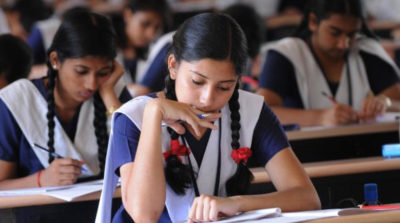 Secondary education, the second stage traditionally found in formal education, beginning about age 11 to 13 and ending usually at age 15 to 18. The dichotomy between elementary education and secondary education has gradually become less marked, not only in curriculum but also in organization. The proliferation of middle schools, junior schools, junior high schools, and other divisions has produced systems with more than two stages.
Secondary education, the second stage traditionally found in formal education, beginning about age 11 to 13 and ending usually at age 15 to 18. The dichotomy between elementary education and secondary education has gradually become less marked, not only in curriculum but also in organization. The proliferation of middle schools, junior schools, junior high schools, and other divisions has produced systems with more than two stages.
In European systems of education, secondary education was preeminently a preparation for the university, with aims and ideals of general. Because of their wide influence throughout the world, it is appropriate to sketch briefly the educational patterns of a few major European nations and the United States.
The French System
France initiated a number of educational reforms beginning in 1968. Contemporary France has a first cycle of education for all children up to grade 5. The transitional grades 6 and 7 are followed by grades 8 and 9, which comprise the so-called guidance cycle, in which students pursue a certain core curriculum, a second foreign language, and a collection of electives. They must decide by the end of grade 9 whether to pursue the academic tracts in upper secondary school or to pursue vocational options. In principle, parents, students, and school counselors must reach an agreement on this decision, but appeal procedures exist to resolve differences.
Students 15 to 18 years of age enter either of two lycées, or high schools: (1) the lycée of general and technological education (lycée d’enseignement général et technologique, or LEGT) is the successor to the traditional academic lycée of the past; (2) the vocational-educational lycée (lycée d’enseignement professionnel, or LEP) encompasses a range of vocational-technical studies and training. The curriculum of the LEGT begins in grade 10 with certain tracked basic courses that lead in grades 11 and 12 to specializations in any one of five subject areas: literary-philosophical studies, economics and social sciences, mathematics and physical sciences, earth sciences and biological sciences, and scientific and industrial technology. In grades 10 and 11 there is a common core of subjects plus options, but in grade 12 all subjects, being optional, are oriented toward the student’s major area of study. The baccalauréat examination taken at the end of these studies qualifies students for university entrance.
Vocational-technical secondary education includes a three-year selection of optional courses leading to one of the 30 or so technical baccalauréats. A student may instead opt for a one-year course conferring no particular qualification or may opt for apprenticeship training in the workplace.
The German System
In Germany, schools are the responsibility of the governments of the states, or Länder, and the structure of elementary and secondary education is not entirely consistent throughout the nation. In all states, however, the period of elementary education covers eight or nine grades. After this period, three basic options are available to the pupils. They may, after counseling by the elementary school teacher and upon the request of the parents, be placed in a Realschule,a Gymnasium, or a Hauptschule, the last representing a continuation of elementary education.
Those pupils attending the Hauptschule proceed with their study of language, arithmetic, geography, history, science, music, art, and physical education. After completion of a four- or five-year program of studies at the Hauptschule, the pupil typically enters apprenticeship training.
In Germany the term “secondary school” refers to institutions offering courses leading to the “Certificate of Maturity” (the Reifezeugnis), a qualification for entrance to an institution of higher education. The Realschule offers pupils further general education, some prevocational courses, and English-language study. At the age of 16, students conclude their program of studies and transfer to a vocational school or enter apprenticeship training.
If academically qualified, a pupil may also transfer to the Gymnasium. The Gymnasium, the third alternative for German youth, offers rigorous academic preparation for higher education. Like the lycée in France and the grammar school in England, the Gymnasium is designed for those students who have shown the most academic promise; and its curriculum, emphasizing languages, mathematics, natural sciences, and social sciences, requires a high degree of diligence throughout all of the nine grades. Unsuccessful students in the Gymnasium may be transferred to the Hauptschule. At the age of 16, moreover, pupils may terminate their academic studies and enter a vocational school.
Students in the Gymnasium must pass an examination, the Abitur, entitling them to the Certificate of Maturity, if they are to be admitted to a German university. The content of the Abitur is adjusted to the focus of studies, such as classical languages or mathematics-science, chosen earlier by the student.
The British System
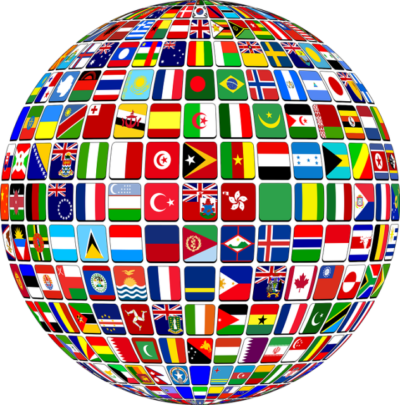 Great Britain’s current system of secondary education is the successor to a slightly older system that assigned students at age 11 to one of three types of schools by means of selection tests. From the 1950s and ’60s these schools were gradually replaced by a single type of school called a comprehensive school, which admits children irrespective of ability or aptitude and which offers both academic and vocational programs under one roof.
Great Britain’s current system of secondary education is the successor to a slightly older system that assigned students at age 11 to one of three types of schools by means of selection tests. From the 1950s and ’60s these schools were gradually replaced by a single type of school called a comprehensive school, which admits children irrespective of ability or aptitude and which offers both academic and vocational programs under one roof.
In Britain the first stage of education is called primary education and includes students from ages 5 (4 in Northern Ireland) to 11 (12 in Scotland). About 90 percent of students then attend comprehensive schools. These schools are organized in various ways, serving ages 11 to 18; 11–12 to 16; or 12–14 to 16–18. Most of the remaining students receive secondary education in secondary modern or grammar schools (these being remnants of the old tripartite school system), to which they are assigned after selective procedures at age 11.
The Education Reform Act 1988 established a national curriculum and regular assessment of performance for children of ages 5 to 16 in all state schools in England and Wales. Similar legislation was passed in Northern Ireland in 1990. In England, Scotland, and Wales parents have a statutory right to express preference for a specific school.
Those students seeking university entrance must successfully complete a series of examinations that result in the General Certificate of Education. These examinations have two levels: General Certificate of Secondary Education (GCSE; formerly “ordinary”) and advanced. Entry to a university requires a prescribed combination of passes on the GCSE and advanced level in such subjects as English, foreign language, science, and mathematics. The sixth-form curriculum (i.e., that of the last two years of secondary school) is largely oriented toward preparation for the advanced-level examination and provides intense specialization.
In Britain a small, separate, but highly significant group of independent schools also exists. These primary and secondary schools are financially self-supporting. The best known of the independent schools are the “public schools,” some of which, notably Eton and Harrow, have long maintained a distinguished reputation. These schools for centuries have prepared students academically for higher education, typically at the universities of Oxford and Cambridge, and ultimately for leadership in British life. Although a controversial element in British education and frequently accused of reinforcing invidious social distinctions, these institutions remain popular.
The Soviet System
The contemporary nations that once formed the U.S.S.R. have an educational pattern that differs distinctively from that just described. The first stage of education takes place in an eight-year general-education school. After graduating from the eight-year school, students, if qualified, have a number of secondary schools open to them, including polytechnical or general secondary schools and various vocational or technical schools. Education authorities attempt to provide prolonged guidance for the pupils and place them into increasingly differentiated programs of study throughout the last few years of the elementary school and the first two or three years of secondary school. Many of those leaving the elementary school go directly into an occupation. Most critical for students wishing to continue their education is the selection at 17 or 18 years of age for higher education. The universities and higher institutes admit only 15 to 20 percent of the graduates of the secondary-level institutions. Most graduates of the polytechnical or general secondary schools are required to take jobs for two or three years, after which those qualified may proceed to higher education.
The U.S. System
Historically, the United States has made little distinction between primary and elementary education—i.e., between those lower schools that prepared students for advanced (or higher) education and those schools that merely provided literacy and some general education for larger groups of children. This heritage has led in the United States to a single system of elementary and secondary education for the great majority of its students.
In the United States, education is the responsibility of the individual states; therefore, some variation in structure exists. Typically, however, students at the age of 13 or 14 enter a neighborhood secondary school; the education there usually lasts for four years, and the students graduate at age 18 on average.
In the United States, more than 80 percent of the secondary-age groups attend secondary school. The American goal for decades has been to provide secondary education for all within a single type of institution popularly referred to as the comprehensive high school. Although the precise meaning of this term is frequently not clear, comprehensive schools usually include a broad program of general and specialized curricula and accommodate a wide range in the academic abilities of the pupils. Thus, in the same American secondary school, some students plan to pursue university study and others seek terminal secondary education.
UNIVERSITY EDUCATION
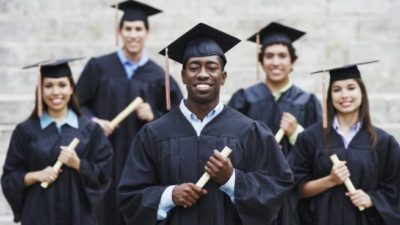 Higher education is tertiary education leading to award of an academic degree. Higher education, also called post-secondary education, third-level or tertiary education, is an optional final stage of formal learning that occurs after completion of secondary education. It represents levels 6, 7 and 8 of the 2011 version of the International Standard Classification of Education structure. Tertiary education at non-degree level is sometimes referred to as further education or continuing education as distinct from higher education.
Higher education is tertiary education leading to award of an academic degree. Higher education, also called post-secondary education, third-level or tertiary education, is an optional final stage of formal learning that occurs after completion of secondary education. It represents levels 6, 7 and 8 of the 2011 version of the International Standard Classification of Education structure. Tertiary education at non-degree level is sometimes referred to as further education or continuing education as distinct from higher education.
Higher education includes teaching, research, exacting applied work (e.g. in medical schools and dental schools), and social services activities of universities. Within the realm of teaching, it includes both the undergraduate level, and beyond that, graduate-level (or postgraduate level). The latter level of education is often referred to as graduate school, especially in North America. In addition to the skills that are specific to any particular degree, potential employers in any profession are looking for evidence of critical thinking and analytical reasoning skills, team-working skills, information literacy, ethical judgment, decision-making skills, fluency in speaking and writing, problem solving skills, and a wide knowledge of liberal arts and sciences.
MASTER'S DEGREE
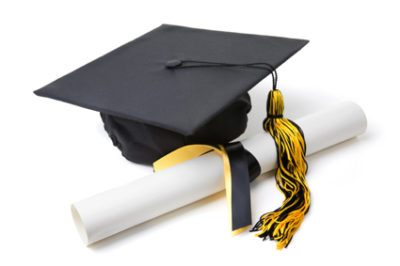 A Master's degree is an academic degree awarded by universities or colleges upon completion of a course of study demonstrating mastery or a high-order overview of a specific field of study or area of professional practice. A master's degree normally requires previous study at the bachelor's level, either as a separate degree or as part of an integrated course. Within the area studied, master's graduates are expected to possess advanced knowledge of a specialized body of theoretical and applied topics; high order skills in analysis, critical evaluation, or professional application; and the ability to solve complex problems and think rigorously and independently.
A Master's degree is an academic degree awarded by universities or colleges upon completion of a course of study demonstrating mastery or a high-order overview of a specific field of study or area of professional practice. A master's degree normally requires previous study at the bachelor's level, either as a separate degree or as part of an integrated course. Within the area studied, master's graduates are expected to possess advanced knowledge of a specialized body of theoretical and applied topics; high order skills in analysis, critical evaluation, or professional application; and the ability to solve complex problems and think rigorously and independently.
A Masters in Education delves deep to explore all aspects of education. Like any developed study or science, Masters in Education programs keep up with the modern knowledge and apply every new bit of it to make the art of teaching better and more effective. Some examples of this that may be explored within a Masters in Education programs are Creative Pedagogy, Educational Philosophy and Psychology, as well as Critical Pedagogy and Concept Learning or Learning Theory. All these examples show education and pedagogy for what this study is really about – pushing the process of education to the limit of perfection, so that the subjects and methods we are supposed to use at schools and universities meet the needs of the drastically developing and changing world.
PhD - DOCTOR OF PHILOSOPHY
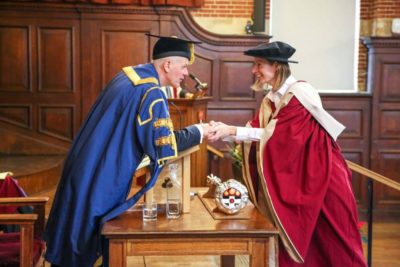 A Doctor of Philosophy (PhD,Ph.D., or DPhil) is the highest university degree that is conferred after a course of study by universities in most countries. PhDs are awarded for programs across the whole breadth of academic fields. As an earned research degree, those studying for a PhD are usually required to produce original research that expands the boundaries of knowledge, normally in the form of a thesis or dissertation, and defend their work against experts in the field. The completion of a PhD is often a requirement for employment as a university professor, researcher, or scientist in many fields. Individuals who have earned a Doctor of Philosophy degree may, in many jurisdictions, use the title Doctor (often abbreviated "Dr" or "Dr.") or, in non-English-speaking countries, variants such as "Dr. phil." with their name, although the proper etiquette associated with this usage may also be subject to the professional ethics of their own scholarly field, culture, or society. Those who teach at universities or work in academic, educational, or research fields are usually addressed by this title "professionally and socially in a salutation or conversation." Alternatively, holders may use post-nominal letters such as "Ph.D.", "PhD", or "DPhil" (depending on the awarding institution). It is, however, considered incorrect to use both the title and post-nominals at the same time.
A Doctor of Philosophy (PhD,Ph.D., or DPhil) is the highest university degree that is conferred after a course of study by universities in most countries. PhDs are awarded for programs across the whole breadth of academic fields. As an earned research degree, those studying for a PhD are usually required to produce original research that expands the boundaries of knowledge, normally in the form of a thesis or dissertation, and defend their work against experts in the field. The completion of a PhD is often a requirement for employment as a university professor, researcher, or scientist in many fields. Individuals who have earned a Doctor of Philosophy degree may, in many jurisdictions, use the title Doctor (often abbreviated "Dr" or "Dr.") or, in non-English-speaking countries, variants such as "Dr. phil." with their name, although the proper etiquette associated with this usage may also be subject to the professional ethics of their own scholarly field, culture, or society. Those who teach at universities or work in academic, educational, or research fields are usually addressed by this title "professionally and socially in a salutation or conversation." Alternatively, holders may use post-nominal letters such as "Ph.D.", "PhD", or "DPhil" (depending on the awarding institution). It is, however, considered incorrect to use both the title and post-nominals at the same time.
The specific requirements to earn a PhD degree vary considerably according to the country, institution, and time period, from entry-level research degrees to higher doctorates. During the studies that lead to the degree, the student is called a doctoral student or PhD student; a student who has completed all of their coursework and comprehensive examinations and is working on their thesis/dissertation is sometimes known as a doctoral candidate or PhD candidate. A student attaining this level may be granted a Candidate of Philosophy degree at some institutions, or may be granted a master's degree en route to the doctoral degree. Sometimes this status is also colloquially known as "Ph.D. ABD", meaning "All But Dissertation".
A PhD candidate must submit a project, thesis or dissertation often consisting of a body of original academic research, which is in principle worthy of publication in a peer-reviewed journal. In many countries, a candidate must defend this work before a panel of expert examiners appointed by the university. Universities sometimes award other types of doctorate besides the PhD, such as the Doctor of Musical Arts (D.M.A.) for music performers and the Doctor of Education (Ed.D.) for professional educators. In 2005 the European Universities Association defined the "Salzburg Principles", 10 basic principles for third-cycle degrees (doctorates) within the Bologna Process. These were followed in 2016 by the "Florence Principles", seven basic principles for doctorates in the arts laid out by the European League of Institutes of the Arts, which have been endorsed by the European Association of Conservatoires, the International Association of Film and Television Schools, the International Association of Universities and Colleges of Art, Design and Media, and the Society for Artistic Research.
In the context of the Doctor of Philosophy and other similarly titled degrees, the term "philosophy" does not refer to the field or academic discipline of philosophy, but is used in a broader sense in accordance with its original Greek meaning, which is "love of wisdom". In most of Europe, all fields (history, philosophy, social sciences, mathematics, and natural philosophy/sciences) other than theology, law, and medicine (the so-called professional, vocational, or technical curriculum) were traditionally known as philosophy, and in Germany and elsewhere in Europe the basic faculty of liberal arts was known as the "faculty of philosophy".
GLOBAL EDUCATION INDUSTRY AND FUTURE
 Global Education and Training Expenditure is set to reach at least $10T by 2030 as population growth in developing markets fuels a massive expansion and technology drives unprecedented re-skilling and up-skilling in developed economies.
Global Education and Training Expenditure is set to reach at least $10T by 2030 as population growth in developing markets fuels a massive expansion and technology drives unprecedented re-skilling and up-skilling in developed economies.
The next decade will see an additional 350 million post secondary graduates and nearly 800 million more K12 graduates than today. Asia and Africa are the driving force behind the expansion.
The education sector is set to see strong expansion globally due to population growth, government support and incentives, inclusion of “Quality Education” as one of the key sustainable development goals of UN, growing importance of adult education and technological and pedagogical changes in teaching and learning.
The integration of Artificial Intelligence (AI) technologies in education shows no signs of slowing down. While the recent years we have seen AI being used for developing virtual teaching assistants and personalizing learning for a student, as the technology evolves and becomes more commercially viable, we will see AI penetrating other areas in education sector like:
- AI Driven Assessment: Artificial intelligence-based assessment provides constant feedback to teachers, students and parents about how the student learns, the support they need and the progress they are making towards their learning goals.
- Remote Exam Proctoring and classrooms: The remote exam proctoring system lets a student to appear for exams from any location. The system can track and monitor remote use using advanced video, image, audio streaming with the intelligence to do analyze if a student is cheating. Remote classrooms will enable students in far corners of the world to attend a class in a school or university in countries. Local players will collaborate with international universities to bring them at an economical price point to developing countries like India.
- Augmented Analytics: As the world becomes more data driven, AI driven analytics will become a critical tool to improve education and make the institutions more competitive. Descriptive and Predictive analytics will assist in crucial areas like reducing drop-out rates, proactive tutoring , timely intervention for at risk students, understanding content quality issues and content consumption patterns. From a school administrator stand point, data collection and analysis will provide insights which will help them design better curriculum, allocate costs efficiently and make the right investment strategies for a school. We will see an increased investment being made in training educators to develop:
- Research and analysis skills to let them interpret the AI data and ask relevant questions of the data
- Collaborative and management skills to work more efficiently with AI assistants and managing the resources effectively
IMMERSIVE EXPERIENTIAL LEARNING
 As private players involve in developing mixed reality tools like Microsoft’s HoloLens, Google Expedition and Windows 10’s mixed reality viewer, the lines between real and virtual worlds will blur and the way educators and students engage with content will significantly change. With 5G technologies on the horizon promising lower latency and more robust connectivity, the quality of these tools will continue to grow, expanding their potential to supplement school and higher education.
As private players involve in developing mixed reality tools like Microsoft’s HoloLens, Google Expedition and Windows 10’s mixed reality viewer, the lines between real and virtual worlds will blur and the way educators and students engage with content will significantly change. With 5G technologies on the horizon promising lower latency and more robust connectivity, the quality of these tools will continue to grow, expanding their potential to supplement school and higher education.
The upcoming years will see evolved Mixed and Augmented Reality hardware and their integration with mobile technologies to make them more accessible. We will see the rise of mobile educational AR apps for developing simulations, real-time translators, 3D models and AR printable worksheets that educators can provide students to continue their learning at home.
STEM to STEAM
 Over the last decade, STEM Education (learning of science, technology, engineering and mathematics in an interdisciplinary or integrated approach) has become an integral part of schools curriculum to develop future workforce who will lead in innovation and technology. But this led to downplaying of other disciplines like art and creativity. Over the past few years, the STEM to STEAM movement has been taking root and encourages including “Arts” into STEM to truly meet the needs of a 21st century economy.
Over the last decade, STEM Education (learning of science, technology, engineering and mathematics in an interdisciplinary or integrated approach) has become an integral part of schools curriculum to develop future workforce who will lead in innovation and technology. But this led to downplaying of other disciplines like art and creativity. Over the past few years, the STEM to STEAM movement has been taking root and encourages including “Arts” into STEM to truly meet the needs of a 21st century economy.
The business and industry now view Design Thinking and Creativity as critical skills to have to nurture innovators, educators, leaders and learners of the future. There will be a need for educators to explore newer curriculum methods and age appropriate design approaches. School administration will need to create an environment that supports successful infusion of STEAM by investing in Smart Spaces and teacher training. There will be an increased focus on producing STEAM starter kits to accelerate design thinking and logic. The demand for teacher training in STEAM will lead to increased development of professional online trainings for teachers. Coding and Robotics will continue to grow in popularity with private sector’s increased participation in developing innovative educational content, providing expert help and transfer knowledge.
PERSONALIZED LEARNING
Personalized Learning has been in the education sector trends for many years now and its popularity keeps growing. But in 2019, we will see increased integration across the globe of personalized learning. EdTech and AI technology has evolved more to cater to personalized learning styles and diverse individual needs. Just in time assessment will assist teachers to intervene at appropriate stages and tailor lesson plans accordingly. Assistive technologies will enable students with learning disabilities to have personal learning experiences and continue mainstream education.
COST MANAGEMENT
 With the increased adoption of EdTech in schools and universities across the world, the school administration will have to strategize and plan their investments accordingly. The next few years will see significant integration of below technologies:
With the increased adoption of EdTech in schools and universities across the world, the school administration will have to strategize and plan their investments accordingly. The next few years will see significant integration of below technologies:
- Cloud Based Technologies: Education organisations will aim to leverage benefits of cloud based technologies to drive cost savings and operational efficiencies through shared services initiatives.
- BlockChain Technology: Education sector will look towards utilizing blockchain technology to cut paper and printing costs by digitally storing student certificates and diplomas, cost and labor savings by transferring the control of storing personal data to the applicants, litigation cost savings due to loss of documents and damage.
- Edge Computing: As schools integrate new tools like AR headsets or connected classroom devices, the demand for computing power and hence cost will go up and this will bring in another aspect called Edge computing. This takes information processing and brings it closer to the source by using edge devices instead of sending information to and from a centralized cloud.AI will assist in diversifying the kind of devices that will act as edge endpoints.
ONLINE EDUCATION
According to KPMG and Google study, it is predicted that online education in India is likely to be 2 Billion USD industry by 2021. With MOOCs and e-learning platforms offering reasonably priced certified courses developing in profusion, governments getting involved in recognizing e-learning programs and the rise in validity of digital certificates offered by these organizations, online learning will continue to see an increased adoption in 2019. There will be more focus on developing micro learning, blitz testing, social media mentoring and content curation.
WELLNESS PROGRAMS
Schools will invest more in developing and evolving wellness programs within premises to tackle issues like absenteeism, stress and anxiety related disorders and learning disabilities. There is more awareness of physical, emotional and spiritual health impacting learning outcomes and this had led to increased focus on conducting mindfulness and meditation programs for students and educators. There will be increased collaboration between schools and wellness experts to conduct life skills training and keeping the children calm and focused.
CONTINUOUS LEARNING PROGRAMS FOR TEACHERS
Schools are investing up to 20% of their budget on teacher and administrator training. Proving continuing education is a great strategy for Teacher retention and career advancement. The infusion of AI and technology will require the teachers to be equipped with latest knowledge, tools and guidelines on ‘how to deal with the changes’ and educate effectively.
Though, we are terming the above as trends, it will be good if these are long-lasting and greatly assist in positively transforming the education sector over the next few years. As a parent and an educator, this is an exciting time to be a part of the educational landscape and crucial to remain engaged with the latest developments and how they shape the future of our children.






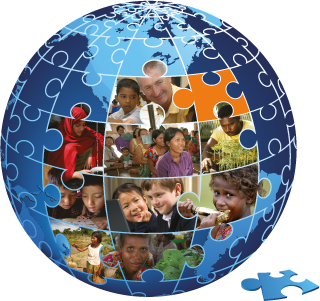

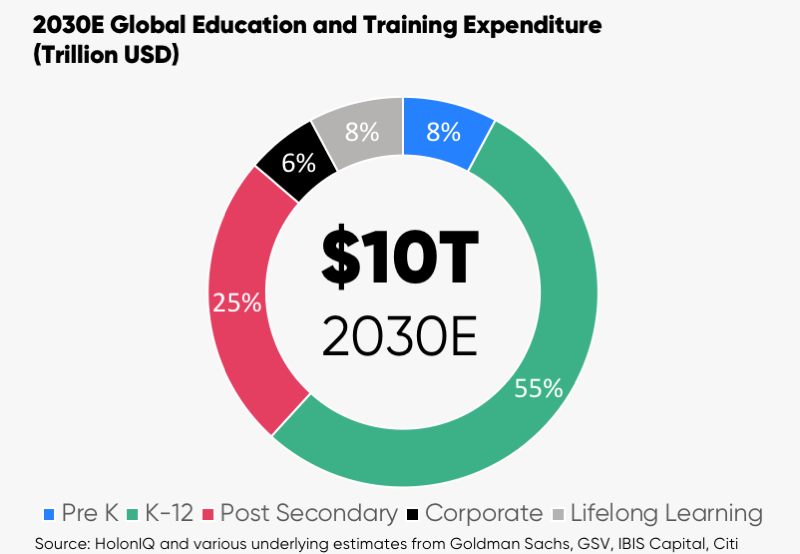

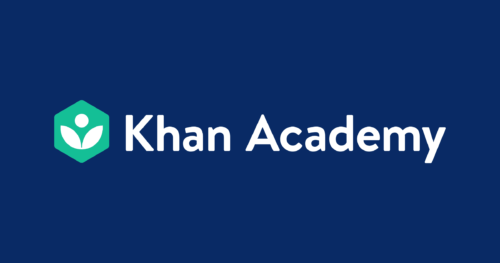
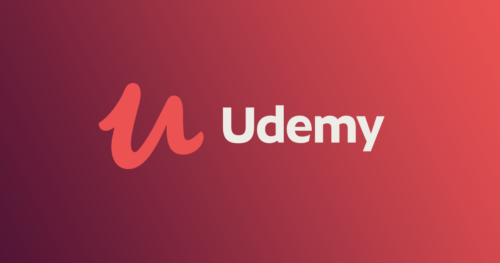

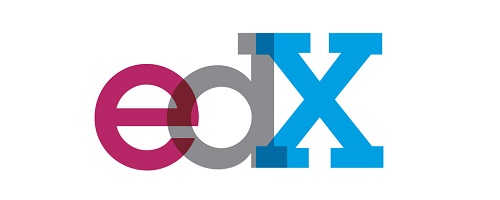
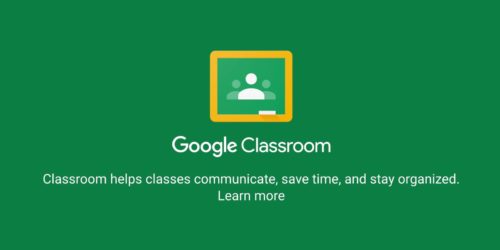




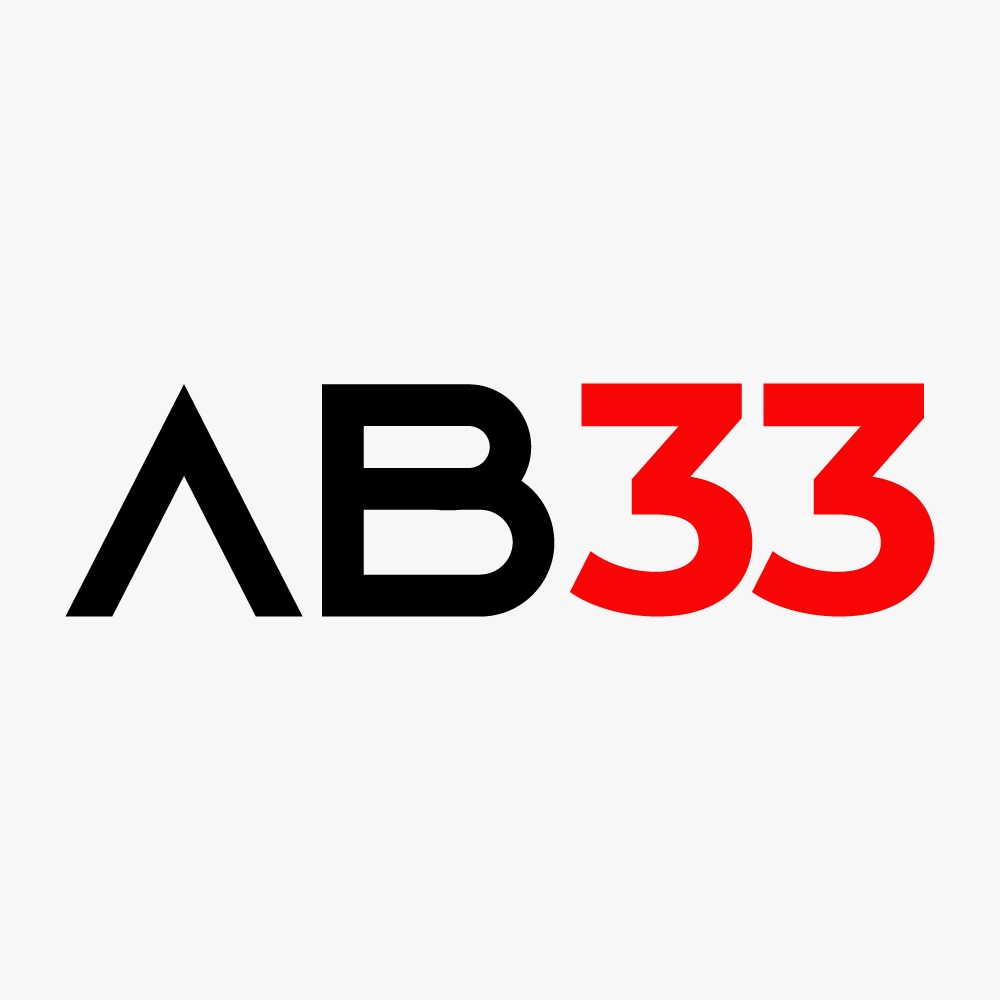

Leave a Reply